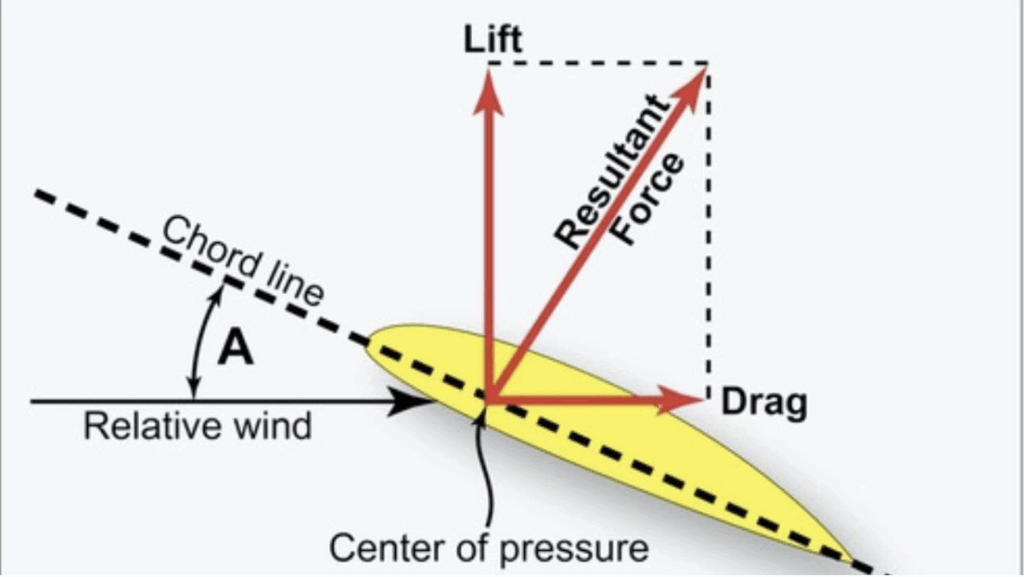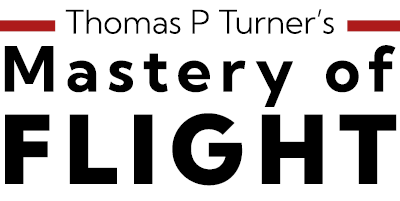Topics this week include: > The inevitable result > Four recommendations > Resultant force

FLYING LESSONS uses recent mishap reports to consider what might have contributed to accidents, so you can make better decisions if you face similar circumstances. In most cases design characteristics of a specific airplane have little direct bearing on the possible causes of aircraft accidents—but knowing how your airplane’s systems respond can make the difference in your success as the scenario unfolds. So apply these FLYING LESSONS to the specific airplane you fly. Verify all technical information before applying it to your aircraft or operation, with manufacturers’ data and recommendations taking precedence. You are pilot in command and are ultimately responsible for the decisions you make.
FLYING LESSONS is an independent product of MASTERY FLIGHT TRAINING, INC.
Pursue Mastery of Flight®
This week’s LESSONS:
It happens with far too frequency. For example, from an FAA preliminary report this week:
[The Cessna 172’s] engine was started with the tow bar attached, damaging the prop[eller] and underside of the left wing….”
A sudden propeller stoppage, even if it does not cause other damage (like the wing in our example, most likely from a piece of the tow bar or the propeller), calls for an engine teardown inspection and reassembly—along with any repairs found to be necessary—in addition to propeller repair or replacement. Even a little “tick” of the propeller against the towbar or some other obstruction is enough in most cases to warrant the teardown inspection.
Another common occurrence is when a pilot (or mechanic) is putting an airplane in or out of the hangar but has not opened the hangar door sufficiently for the vertical tail to clear. Busted beacons and lights aren’t too difficult or (in the aeronautical scheme) costly to repair, but if the stabilizer or rudder itself makes contact it could result in substantial damage that takes a lot of time and money to fix.
Yet another frequent damage cause is pushing the airplane too far back into a hangar, or into the hangar crooked, causing damage to flight controls on the rear of the wings and tail.
The inevitable result of these types of events is airplane damage and a costly insurance claim. Although these events sound mundane they are among the most costly type of claims for the insurance industry and therefore cost pilots, mechanics and airplane owners, both in terms of airplane down time and loss of use and in the overall cost of insurance. The impact is felt by us all as insurance rates are raised to cover the underwriters’ losses.
I’ve heard unofficially from insurance industry sources that only about one-third of insurance claims come from NTSB-reportable accidents, so what we read in the McSpadden Report and most articles and websites about accident types and numbers does not reflect the true nature of insurance claims, and of aircraft damage costs and down time.
It’s not exciting to focus some thought on these seemingly mundane events. But in addition to the long-term insurance impact I want to help you avoid the shorter-term costs of repairs and loss of use of the aircraft while inspections and repairs are completed. With that in mind this week I’ll pass along four recommendations to avoid towbar strikes and hangar impacts:
- Attach the tow bar only long enough to move the airplane. Do not leave the tow bar attached, ever, except during the actual time you’re moving the aircraft. Make it a habit to attach, pull and remove the towbar and you’ll be less likely to forget to go back and remove the towbar before attempting engine start.
- Always open the hangar door all the way. Don’t ever leave it partially open and you’ll be less likely to forget and pull an airplane into the door. An exception: if you want natural light in the hangar but it’s too cold or windy to open the door all the way, open it less that what allows you to walk beneath a vertical door, or with a sideways-opening door open it no more than halfway. Either of these make it obvious the door is not fully open shoukd time come for you to pull the airplane out.
- Chock the nose wheel (or the mains) in the hangar and leave the rearmost wheel chock(s) in place when you pull the airplane out. Chocks serve as the “no further than this” limit, preventing you from pushing the airplane far enough back it hits the hangar structure. Painted lines work less well because they won’t physically prevent you from pushing beyond the limit.
- Paint an alignment stripe on the hangar floor from the door opening to where the nose (or tail) wheel should end up. If the hangar owner frowns on paint try children’s colored sidewalk chalk, remarking it monthly or as needed.
What techniques can you pass along to help us all better avoid costly, if not deadly, mishaps?
Questions? Comments? Supportable opinions? Let us know at [email protected].
THANK YOU to Pilot Workshops for renewing your sponsorship of FLYING LESSONS Weekly. Pilot Workshops is now owned by Sporty’s Pilot Shop.

Debrief
Readers write about recent LESSONS:
Frequent Debriefer and aerobatics instructor Anthony Johnstone writes about the April 24 LESSONS and our discussion of spiral instability, spiral development and recovery:
As usual, I look forward to your weekly missive! I do have to take issue with a fine point about lift vector, though. Lift is generated perpendicular to the relative wind, regardless of wing chord. If the lift was perpendicular to chord, as angle of attack increased, lift vector would move backwards. Obviously this does not happen.
This becomes important when dealing with situations where lift vector can kill you. Understanding upset recovery by unloading the wing and making the lift vector go away comes to mind.

Lift, drag and resultant force (FAA)
You’re right, of course. What I should have said was that the resultant force, that is, the combined result of lift generated (perpendicular to the relative wind, as you point out) and drag, is what causes the airplane to pitch up and load up (with G force) when rolling out of a spiral. Resultant force is not exactly perpendicular to the wing chord as it varies with angle of attack, speed and air density. From a pilot’s perspective the LESSON is unchanged, but like you I’m a sticker for words. Thank you, Tony.
Reader Dan Norris sent this note with a much-welcomed donation to help cover my costs for hosting and delivering these LESSONS:
I’m a recent subscriber, but definitely appreciate your analysis and review. While the stories are often not happy, understanding something from them can help avoid future accidents and make us all better pilots.
Incidentally, my wife and I were both scuba instructors and ran a dive club for many years. In our monthly meetings, we would often cover accident reports with a similar purpose–help make better divers by learning from those who made mistakes. Similar to aircraft incidents, the vast majority of accidents were caused by poor decision making [compared to] faulty equipment. Training is the only tool we have to combat such occurrences.
Thanks, Dan. It’s interesting how the LESSONS of technical activities that are heavily dependent on human decision-making have the same issues and the same pathways toward risk management.
More to say? Let us learn from you, at [email protected]

Share safer skies. Forward FLYING LESSONS to a friend.
Please help cover the ongoing costs of providing FLYING LESSONS through this secure PayPal donations link. Or send a check made out to Mastery Flight Training, Inc. at 247 Tiffany Street, Rose Hill, Kansas USA 67133. Thank you, generous supporters.
Thank you to our regular monthly financial contributors:
Steven Bernstein, Montclair, NJ. Robert Carhart, Jr., Odentown, MD. Greg Cohen, Gaithersburg, MD. John Collins, Martinsburg, WV. Dan Drew. Rob Finfrock, Rio Rancho, NM. Norman Gallagher. Bill Griffith, Indianapolis, IN. Steven Hefner, Corinth, MS; Ellen Herr, Ft Myers, FL. Erik Hoel, Redlands, CA. Ron Horton. David Karalunas, Anchorage, AK. Steve Kelly, Appleton, WI. Karl Kleiderer. Greg Long, Johnston, IA. Rick Lugash, Los Angeles, CA. Richard McCraw, Hinesburg, VT. David Ovad, Resiertown, MD. Steven Oxholm, Portsmouth, NH. Brian Schiff, Keller, TX. Paul Sergeant, Allen, TX. Paul Uhlig, Wichita, KS. Richard Whitney, Warrenton, VA. Jim Preston, Alexandria, VA. Johannes Ascherl, Munich, Germany. Bruce Dickerson, Asheville, NC. Edmund Braly, Norman, OK. Steven Hefner. Lorne Sheren, New Vernon, NJ. “The Proficient Pilot,” Keller, TX. Ed Stack, Prospect Heights, IL. Kynan Sturgiss, Hereford, TX. Bluegrass Rental Properties, LLC, London, KY. John Foster. Joseph Victor, Bellevue, WA. Chris Palmer, Irvine, CA. Barry Warner, Yakima, WA. Todd LeClair, Cadiz, KY
NEW THIS WEEK: Daniel Norris, Robert Sparks
Thanks also to these donors in 2025:
John Teipen. N. Wendell Todd. David Peterson. Jay Apt. SABRIS Aviation/Dave Dewhirst. Gilbert Buettner. David Larsen, Peter Baron, Glen Yeldezian, Charles Waldrop, Ian O’Connell, Mark Sletten, Lucius Fleuchaus. Thomas Jaszewski. Lauren McGavran. Bruce Jacobsen, Leroy Atkins, Coyle Schwab, Michael Morrow, Lew Gage, Panatech Computer (Henry Fiorentini), John Whitehead, Andy Urban, Wayne Colburn, Stu Spindel, Dave Buetow, Ken Vernmar, Dave Wacker, Bill Farrell, David Miller
Pursue Mastery of Flight(R)
Thomas P. Turner, M.S. Aviation Safety
Flight Instructor Hall of Fame Inductee
2021 Jack Eggspuehler Service Award winner
2010 National FAA Safety Team Representative of the Year
2008 FAA Central Region CFI of the Year
FLYING LESSONS is ©2025 Mastery Flight Training, Inc. For more information see www.thomaspturner.com. For reprint permission or other questions contact [email protected]

